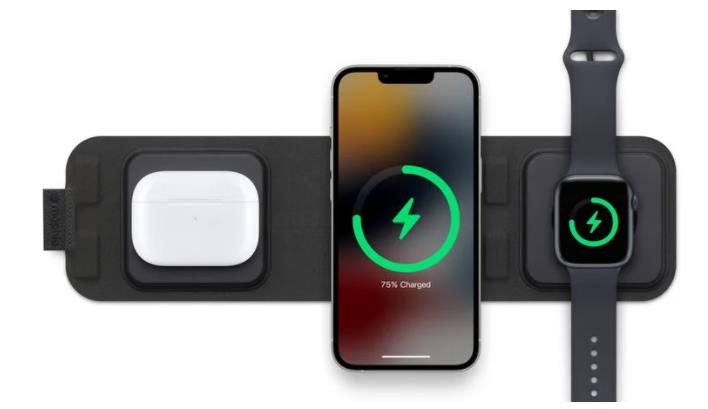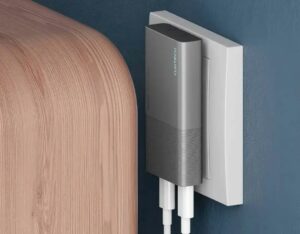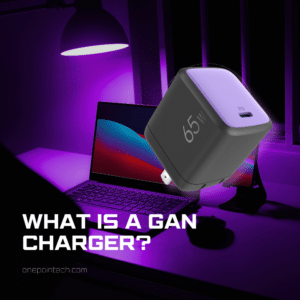Wireless phone charging has become widespread over the years, thanks to its unique charging technology. Although once a specialty feature, wireless charging has gained widespread popularity and is standard on most smartphones.
These chargers have an elegant and cordless design that looks neat compared to traditional chargers with a corded design. Wireless charging is also noted for its convenience and ease of use.
Even though the advantages of wireless phone charging are apparent, it has some limitations, like limited speed, while traditional chargers are able to offer 60W fast charging right now. So, if you’re thinking about switching to wireless charging, it’s a good idea to be aware of the benefits and drawbacks.
In this article, we will explore the benefits and drawbacks of wireless charging over conventional charging.
How Does Wireless Charging Work?
Before we go into the benefits and drawbacks of wireless charging, it’s crucial to understand how it works. Wireless charging often referred to as inductive charging, is a charging method that does not require cords. Instead, this charging uses a resonant inductive that links the device and the charger.
Place your phone on top of a charging device, and it will begin to charge. This charging features an electromagnetic field that uses electromagnetic induction to transmit the power. The power is sent to the gadget and is used to recharge the batteries. A test signal is sent to the device to calculate the required charging energy.
What are the Benefits of a Wireless Charger?
A wireless charger offers several advantages when compared to a traditional charger. They include:
1. Convenient
An advantage of wireless charging is its wireless technology and cordless design. The wireless technology eliminates the need for tangled wires and simplifies the process by simply putting your smartphone at the charging station.
Furthermore, you will not have to be concerned about losing your cable or the necessity for several charges. With a wireless charger, you can charge several types of devices like your smartphone and watch. Better yet, wireless technology lowers the risk of a power surge to your device.
2. Allows Multi-charging
Do you own multiple devices and find the need to buy several charging devices? Well, with a wireless charger, you won’t need a pile of chargers in your home like traditional charging. Wireless charging can work with practically any smartphone with wireless charging function, regardless of the form or size of the charging port.
It offers a one-size-fits-all solution whether you want to charge an Apple or Android device. Furthermore, with multi-function wireless chargers, you can also charge other devices such as AirPods and Apple Watch. As a result, you can cut down on the number of cords and make your office desk more organized and cleaner.
Besides, there are models in the market that let you charge multiple phones simultaneously. With just one power socket, you can charge several phones at the same time.
3. Integration
While traditional chargers can only be used separately, wireless chargers can be embedded into furniture, which is a great feature for furniture manufacturers to make more selling points for the products.
Wireless charging bedside tables and wireless charging office tables are getting popular these days. Some manufacturers even integrate the wireless charger into the sofa so that end users can simply put their smartphones on the sofa arm to get them charged. A very cool feature, isn’t it? Well, with traditional chargers, you won’t be able to do that.
4. Durable Interface
In traditional charging, there is a need for frequent plugging and unplugging of cables, and this can cause wear and tear to your phone’s interface. However, wireless charging can help reduce the likelihood of wear and tear on your device since you won’t put a strain on the charging port or charging plug.
Disadvantages of Wireless Charging
Wireless charging has its advantages, but it is not without flaws. Here are some of the cons of using this charging.
1. Not As Efficient
Wireless charging is still less efficient compared to standard chargers when it comes to performance. Some wireless chargers cannot achieve the same levels of effectiveness as conventional chargers, causing the charging process to be longer.
And when you’re using the badly designed wireless chargers, they might cause your phone to heat a lot. So you have to have the ability to distinguish between a good performance wireless charger and bad quality ones. ONE POINTECH wireless chargers are well designed and have great efficiency. It’s a safe investment.
2. Compatibility
Although wireless chargers can conveniently charge different devices, they may not be compatible with all the phone models, especially the old ones. But we can have a solution for this. To help the phones without wireless charging functions be able to get wireless power, you will need to add receivers. It wouldn’t cost much though.
3. Expensive
Wireless chargers tend to be more expensive than standard chargers. In most cases, wireless chargers may cost up to two or three times the price of a traditional charger. But considering the benefits they bring, it’s worth the investment.
Conclusion
Wireless charging is a relatively new technology and it may take a while to fully develop wireless capabilities and achieve widespread acceptance. Wireless chargers are simple to use and can conveniently charge multiple devices, freeing up more outlets. They’re also more secure than strange cabled chargers and have excellent interface durability.
Interested in the wireless chargers now? Visit our online store to check out our collection.





